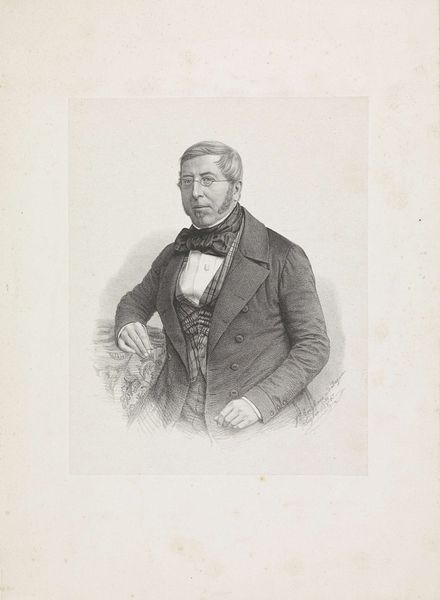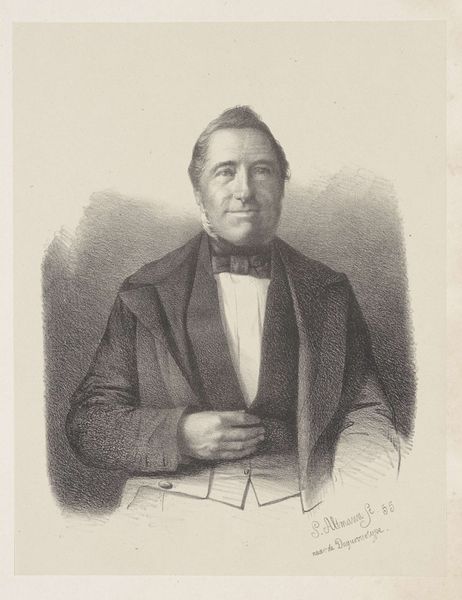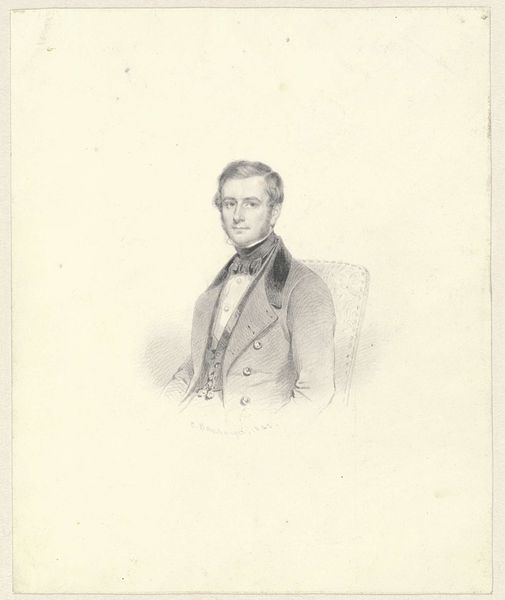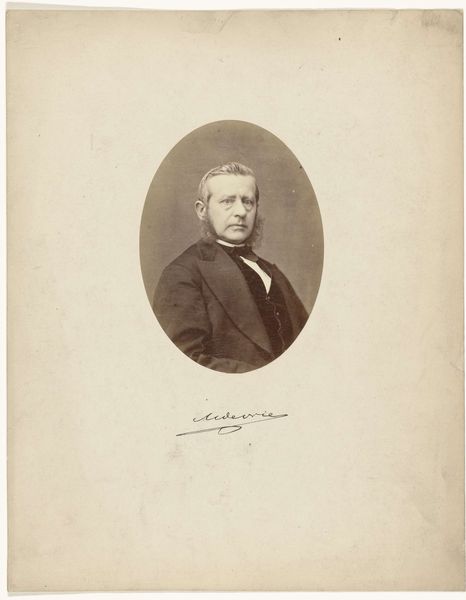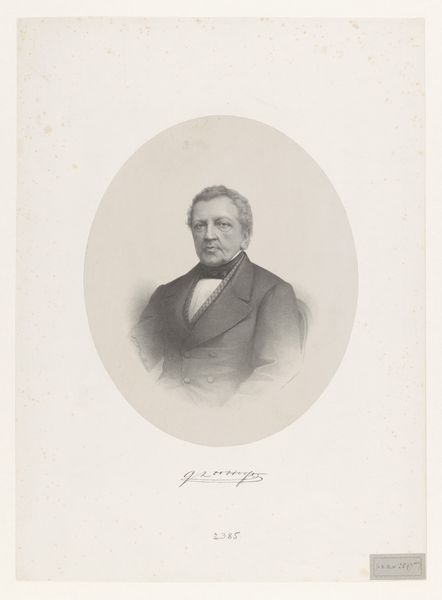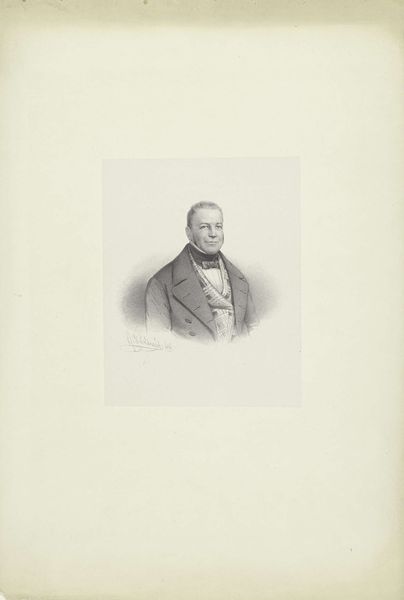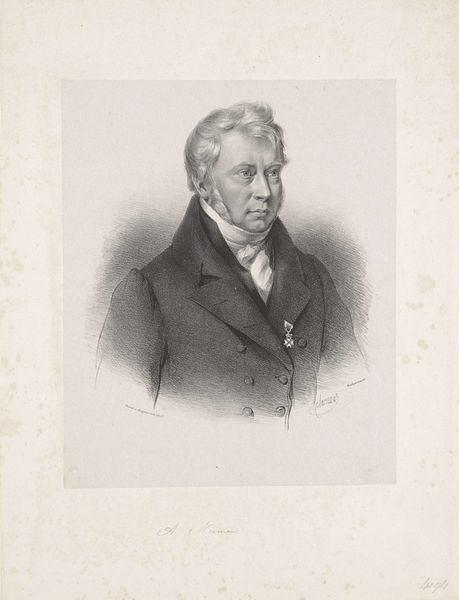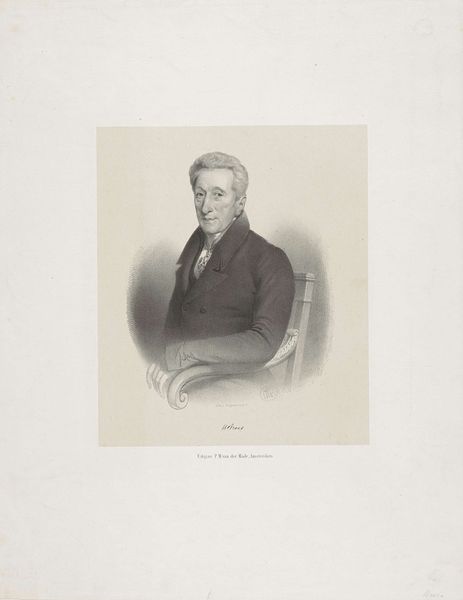
Portret van de dichter en schrijver Isaac da Costa 1826 - 1886
0:00
0:00
dirkjurriaansluyter
Rijksmuseum
drawing, print, graphite, engraving
#
portrait
#
pencil drawn
#
drawing
#
neoclassicism
# print
#
pencil sketch
#
charcoal drawing
#
pencil drawing
#
graphite
#
portrait drawing
#
engraving
Dimensions: height 250 mm, width 166 mm
Copyright: Rijks Museum: Open Domain
Curator: This is a drawing titled “Portret van de dichter en schrijver Isaac da Costa,” made between 1826 and 1886 by Dirk Jurriaan Sluyter, here in the Rijksmuseum. Editor: My first impression is somber; it’s monochrome, giving it an austere and perhaps even mournful quality. What can you tell me about Da Costa? Curator: Isaac da Costa was a poet and writer from a prominent Sephardic Jewish family in Amsterdam. He later converted to Christianity, which was quite controversial and informs much of his writing. This portrait captures the weight of those complexities, I think. The historical context of religious conversion during this period is crucial. Editor: I see it in the precise lines; it must have been meticulously engraved. The reproduction, whether print, graphite or pencil sketch, suggests a move away from painting, indicating something about the democratisation of image-making and access. What does the means of production tell us about the social context? Curator: Indeed, prints allowed for wider dissemination of images and ideas. But in this portrait, Sluyter doesn’t idealize Da Costa. The technique, using what appears to be engraving, graphite, and pencil, serves a realistic depiction, possibly echoing the subject's own move toward a stringent faith and literary style. Editor: It seems more aligned with the clean lines of neoclassicism, which often served ideological purposes, reflecting power and order, perhaps mirroring Da Costa’s pursuit of spiritual and intellectual rigor within the structures of Dutch society. Curator: Precisely! And while it presents Da Costa as an individual, the artwork operates within networks of patronage and publishing, demonstrating the material support required for intellectual pursuits. The circulation of his image becomes part of the construction and reinforcement of his literary and social standing. Editor: Analyzing the social layers reflected in the image's creation and circulation alongside the physical properties of the portrait, its lines, and reproduction processes offers such rich context. It moves beyond a simple depiction. Curator: Agreed, recognizing those forces at play enhances the way the work's historical role intersects with discussions of representation and visibility.
Comments
No comments
Be the first to comment and join the conversation on the ultimate creative platform.
